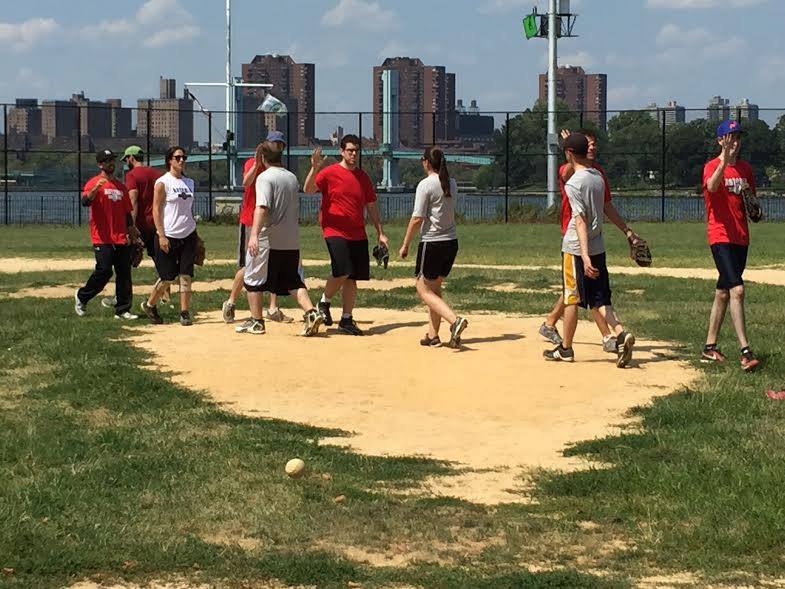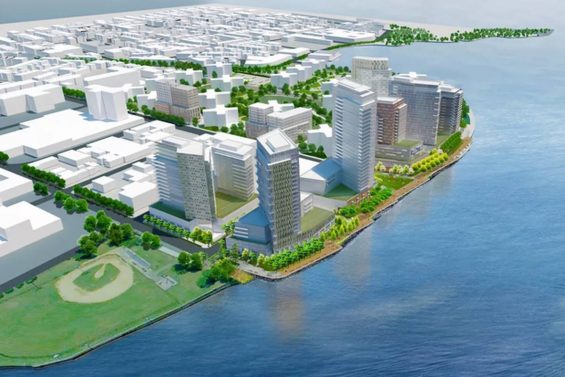Nov. 27, 2017 By Christian Murray
An eclectic group of softball players, history buffs and local residents formed a group earlier this year dedicated to upgrading Whitey Ford Field located on the Hallets Point Peninsula.
The group aims to work with the city agencies, elected officials and various stakeholders to ensure the field is upgraded and the history of the peninsula that dates back to the 17th Century is recognized. In addition, its members want a monument placed in dedication of the famed Yankees pitcher Whitey Ford for whom the park is named.
Ford, 89, is an Astoria native and Hall of Fame pitcher who played for the Yankees from 1950 through 1967.
The field, located along the East River at 26th Avenue and 2nd Street, has been in poor condition for years, with an uneven surface that is prone to flooding and is dangerous for softball players. The field is used by Astoria Social, a coed softball league with about 300 players who use it between April and November.
The newly-formed group, called the Friends of Whitey Ford Field, has come together at a time when the peninsula is undergoing a renaissance. The Durst organization is in the midst of building 2,400 units adjacent to the field and another development approved for 1,400 units–is also planned nearby. City officials have allocated $3 million toward the upgrade of the Hallets Cove Playground (located by Astoria Houses) and ferry service from the peninsula started in August.
In spring, just months after the group’s formation, the city allocated $2 million to upgrade the field. The funds will be spent on re-grading the baseball field, re-sodding grass and flood prevention.
The Friends of Whitey Ford Park received $5,000 last week via the City Council’s Parks Equity Initiative, which supports community programing in smaller parks via friends groups.
Neil Herdan, chairman of Friends of Whitey Ford Field, said the funds will be used to create a website, promotion and cleanups. He aims to raise $250,000 so the group is better able to represent stakeholders such as local residents, softball players to historians. With strong financial backing, he said, the group will have more sway with city agencies, elected leaders and the community board.
Herdan said that there will still be a great deal of work to be done on the field even with the $2 million upgrade. He said the revamp will not cover the costs of revamping the outer field or the group’s historical preservation goals.
The peninsula was home to the first Dutch settlers in the 17th Century, according to Herdan, who is also a member of the Greater Astoria Historical Society. The peninsula was also where Fort Stevens was constructed to guard against the British during the war of 1812








